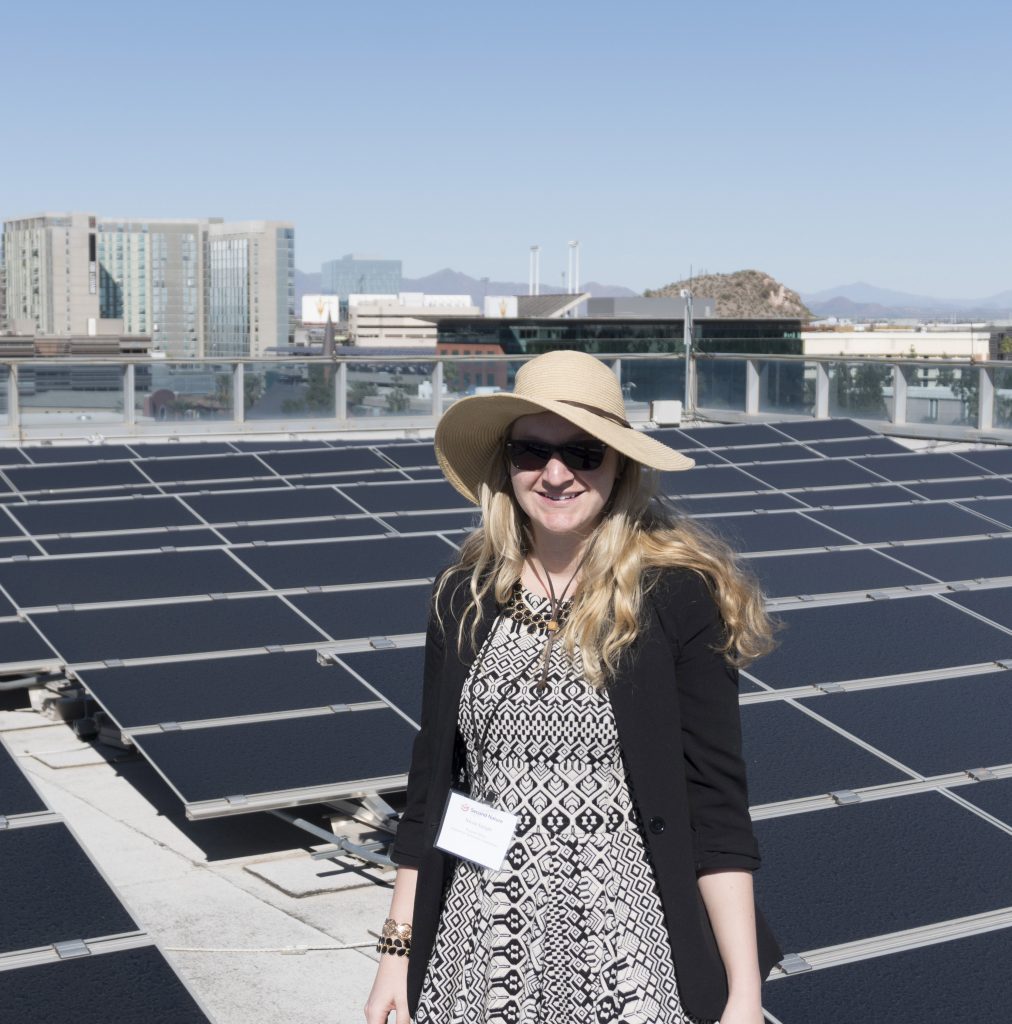Three and a half years ago, ISC was tapped to help accelerate solar deployment in communities across the U.S. as the national coordinator for the Solar Market Pathways (SMP) program. As we wrap up the program this summer and I reflect on all that’s happened since 2015—shortly after I joined ISC—I think of the transformative program’s journey from proposal to close-out, and about my journey growing into ISC’s “go-to” on all things solar-related.
We’ve had the opportunity to help 14 diverse solar projects across the country make significant advancements toward reducing the soft costs of solar. ISC worked alongside each of these projects as we tackled issues ranging from increasing access to community solar and improving emergency management plans through solar+storage, to promoting solar investment at higher education institutions.
As the 14 projects dug into technical challenges, so did I, researching best practices and building my own professional network as I connected with solar experts who helped us complete 36 technical assistance requests on financial modeling, GIS modeling, tool development, workshops, and legal support.
Through our peer learning network, we helped communities bypass years of the solar learning curve—accelerating replication and adoption through a cost-effective approach. With everything we did, we wanted to inspire and help others initiate or improve their own solar strategies based on lessons we learned.
With breakthroughs and insights coming from each initiative, we had a lot to share on the national stage. I helped get project teams out to conferences, and when that wasn’t possible, I presented on their behalf, sharing their promising practices and building their profiles. This close work with projects launched ISC into the cutting edge of emerging topics in the field, helping us gain insights into solar industry advances, trends, and opportunities.
It’s now time to celebrate all that the program – and each individual project – accomplished! We jumpstarted the community solar market in the Chicago region, created comprehensive deployment plans for nascent markets in Duluth and Utah, developed a regional market in the Northeast, and improved emergency preparedness plans with solar+storage technologies in cities like New York and San Francisco.
Our website now carefully documents our entire three-year journey, to include the best tools and resources for others to replicate successes in their own communities. Each of the 14 project profiles share curated resources, project milestones, and key takeaways. We also added new tools and resources to the six toolkits we developed and curated around key areas of innovation—catalyzing community solar, growing nascent markets, building resilience with solar+storage, increasing higher education investment potential, expanding engagement and participation, and working with utilities.
Though one chapter is ending at ISC, another is just beginning as we carry our solar energy expertise to other parts of our U.S. Program portfolio. I’ll bring the lessons learned and technical skills with me as I work with low-income communities and communities of color to build their capacity to shape and lead solar energy projects through our Partnership for Resilient Communities. I’ll also be busy exploring opportunities for regional collaboration on sustainability and climate change with Chicago-area communities, and options for cities to support clean energy finance. Through it all, I’ll continue to focus on fostering peer learning and bringing best practices to scale, all informed by my experiences as a clean energy professional.

